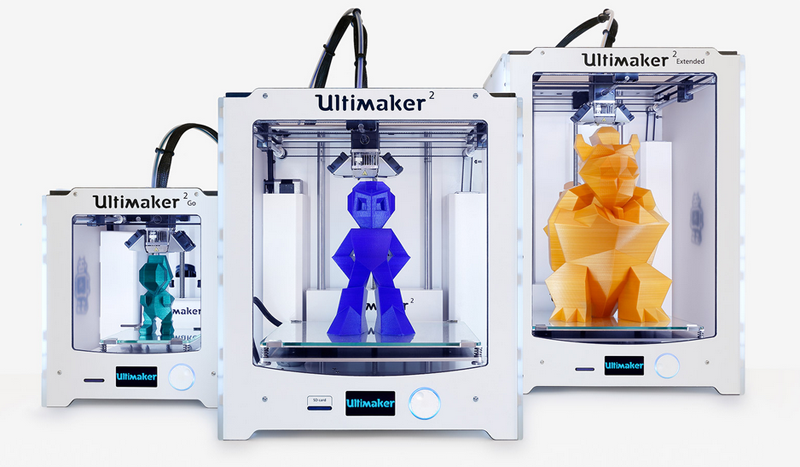 NEWS
NEWS
 NEWS
NEWS
 NEWS
NEWS
It’s no secret that 3D printing is changing the way industry designs, develops and prototypes, but what about the average person? Few people have a burning need for industrial parts or custom medical devices. As it turns out, there is a growing demand for home appliance printers that anyone can use. People are discovering that 3D printing isn’t just a tool for industrial applications, but also a way to have fun. Home users are printing out toys, games and props from movies or video games. A number of websites have sprung up offering designs and printed products for this fun-loving home market.
Today’s 3D printing roundup takes a look at the many ways home users are putting their 3D printers to work.
Many people who own 3D printers are also into video games, or just games in general. They love the characters from games and the props that make the game world come to life. This goes for TV and movies as well; what would a Star Wars Jedi be without his lightstaber? Or a Colonial Marine without his rifle? For years, people have been making their own versions of these props and dressing up like their favorite characters at conventions and other fan gatherings. Now, 3D printing has given them a huge leg up in making these props and costumes.
Want to cosplay a guardian from Bungie, Inc.’s popular video game Destiny? Here’s a 3D printable Ghost by Kirby Downey from My Mini Factory.
For those into the costuming scene, websites offer a range of 3D-printed props, masks and accessories to match the characters from many games, movies, and shows. Some of these pieces come pre-printed, while others are downloaded in the form of plans that people can print for themselves.
One place where 3D printing has had a big impact is the world of hobbies and niche interests. For these hobbyists, getting the right pieces and parts for their robots, RC cars, model airplanes and such could be a real struggle. If a company went out of business or supplies dried up, hobbyists would find themselves out of luck. That’s changed thanks to 3D printing. Now, they can keep a library of files to print out whatever items their hobby requires.
MakerBot Thingiverse (MakerBot Industries, LLC) features a massive marketplace for 3D printed models.
This new technology has also opened up a door for hobbyists to build and customize their stuff in ways never seen before. If, for example, a hobbyist thinks their model trains would look great with dinosaurs in the livestock cars, they can print up those dinos in the right scale, customized to fit.
Everyone loves board games, and recent years have seen a revolution of new and exciting games from smaller publishers. The board game scene is really taking off. With it, new players are coming into the scene looking to spice up their games with custom dice, unique game pieces, personalized card holders and more. Of course, 3D printing has them covered. Here, especially, the power of 3D printing to make things that are impossible by normal methods comes to light. Everyone knows what dice look like, but what about dice made from twisting metal thorns?
Shapeways, Inc., 3D printed item marketplace, has metallic dice made of twisted thorns.
No matter if players are looking for playing pieces, miniatures, special terrain to bring life to the board, or just those little clips that keep falling off and disappearing behind the couch, it’s out there and ready to be printed.
One of the most interesting things about 3D printing is the experience of those who discover what it can do. Hobbyists and first-adopters talk all day about technical details, and that’s fine, but what about the ordinary person who comes away from Christmas or a birthday with a 3D printer in their home? One of these ordinary people is Mike Krahulik, otherwise known as Gabe from the popular webcomic, Penny Arcade. He’s written a number of blog columns about his experience with 3D printing and how he’s seen new ways the technology can be put to use.
The 3D printer market is heating up and there’s been a lot of new companies producing consumer-centric 3D desktop printers. For the reader with the cash (starting around $1,200 all the way up to over $3,000) here’s a round-up of the best consumer 3D printers currently on the market in 2015. What once was the purview of industrial-level rapid prototyping is coming to consumers and it can be a fun hobby to get involved in.
Support our mission to keep content open and free by engaging with theCUBE community. Join theCUBE’s Alumni Trust Network, where technology leaders connect, share intelligence and create opportunities.
Founded by tech visionaries John Furrier and Dave Vellante, SiliconANGLE Media has built a dynamic ecosystem of industry-leading digital media brands that reach 15+ million elite tech professionals. Our new proprietary theCUBE AI Video Cloud is breaking ground in audience interaction, leveraging theCUBEai.com neural network to help technology companies make data-driven decisions and stay at the forefront of industry conversations.